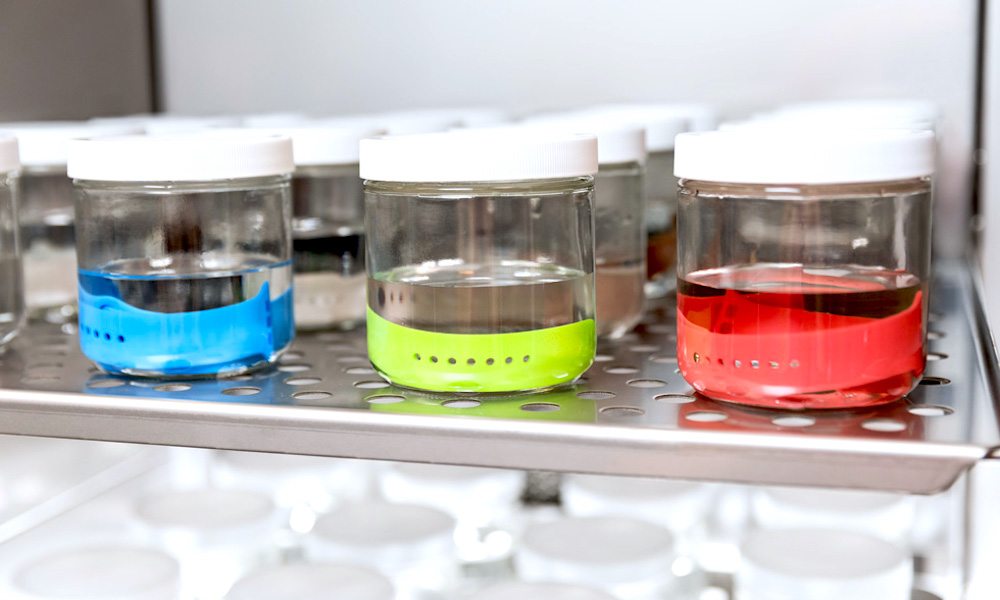Apple Has Been Making Sweat to Test Its Products

Image via Apple
Toggle Dark Mode
Apple has been making its own artificial sweat to test various wearable products, the company revealed in its 2017 Environmental Responsibility Report published on Thursday.
The Cupertino tech giant uses the substance to test how quickly materials commonly found in electronics — like nickel — transfer into sweat from devices that come into contact with human skin, such as the Apple Watch. Quite a few people are allergic to nickel, which is commonly used in metal alloys found in wearable devices, CNBC reported. Stainless steel, for example, can contain nickel.
The process involves placing Apple Watch straps in jars filled with the company’s proprietary artificial sweat. The company then puts the jars into an incubator that simulates human body temperature, and monitors the samples to ensure that various allergens and irritants aren’t leaking into the sweat, the Environmental Responsibility Report stated.
The company doesn’t just test Apple Watch straps, either — it puts all devices that might come into contact with human skin through similarly rigorous testing. “We analyze materials that someone might put in their mouth — like an Apple Pencil you might chew on while considering the next line in your drawing — to make sure they’re safe,” the company said in the report. Apple also takes into account how devices and materials can degrade over time, stating that they “evaluate products after they’ve undergone extensive reliability testing to ensure that they remain safe for our customers, even after years of use and exposure to different environmental conditions.”
The Apple Watch testing is just one part of a larger initiative of using materials that are safer for both people and the environment. To do so, the company formed its own Environmental Testing Lab in 2006, where Apple’s own scientists conduct testing to detect any harmful substances, “rather than waiting for a third party to identify them for us.” In the eleven years since, the Lab has grown to 20 times its original size, and has reportedly tested 20,000 individual components, out of the 40,000 present in the company’s devices, prioritizing materials that come into frequent contact with skin.






